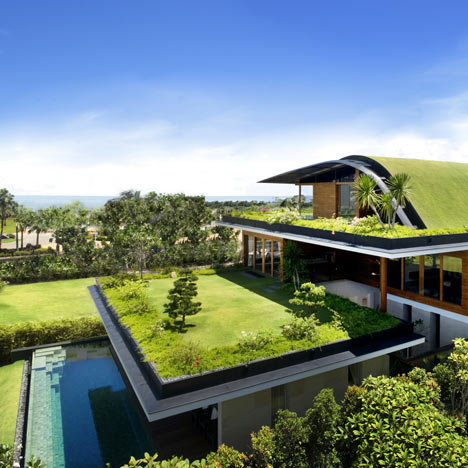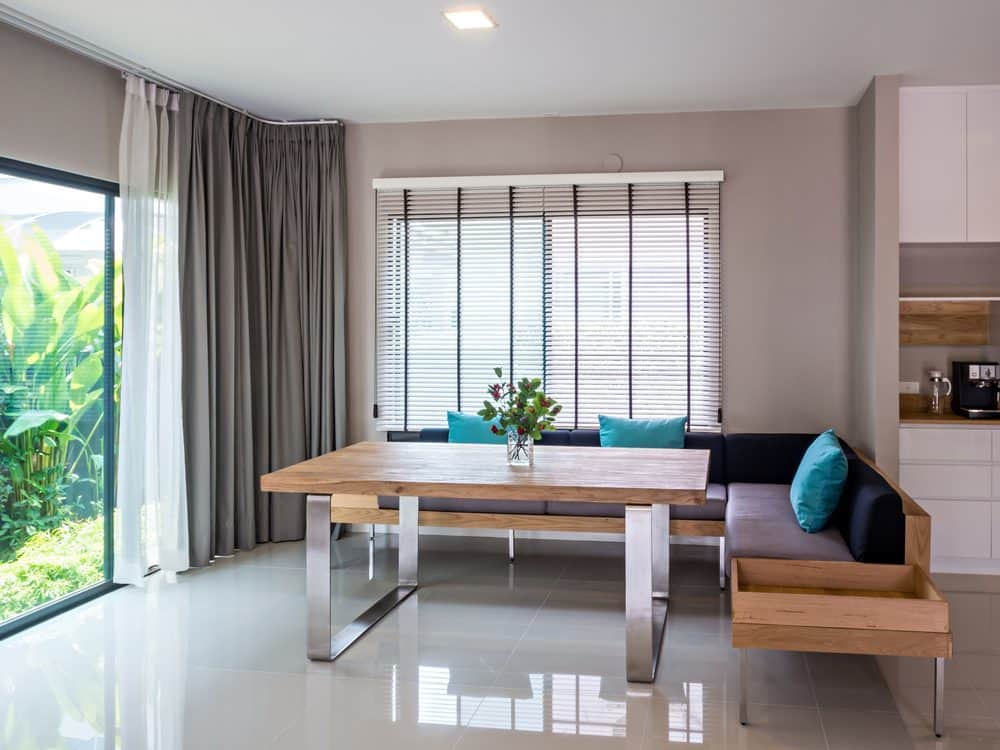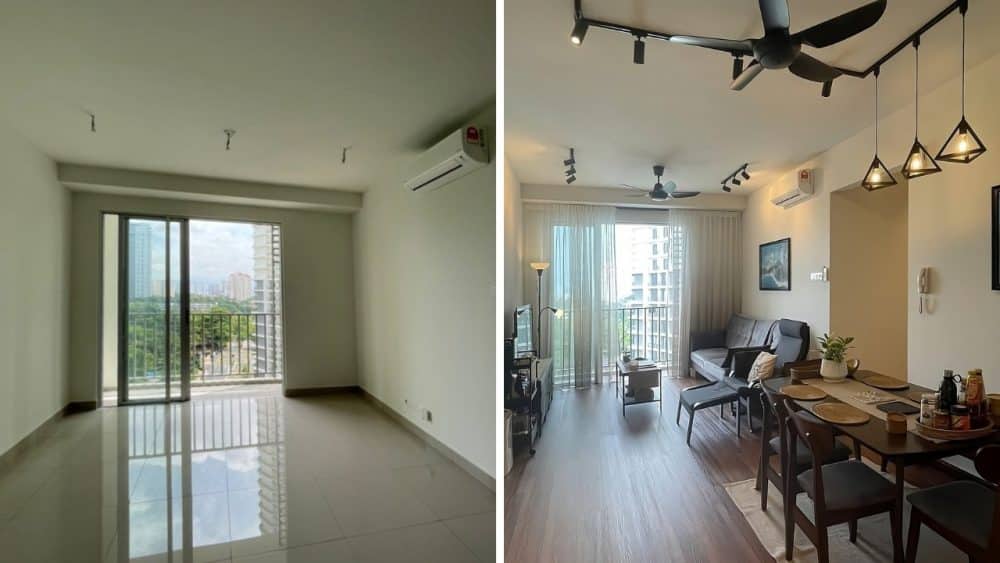The temperature and humidity in Malaysia means that air-conditioning is practically a must in any home. In heavily urbanised areas, the air is completely still on most days, even if you opened all your windows and doors. What else can you do but reach for the remote control?
The problem is, even with proper maintenance and care and regular air-con servicing, air-conditioning is an enormous energy guzzler, taking up 30% of a typical household electricity bill.
Is it possible to design a home that stays cool naturally, thus reducing the dependency on air-conditioning?
Here are some upgrades you can make that will allow your homes to stay cool without air-conditioning.
1. Increase the overhang of your roof
Depending on which way your windows are facing, you can extend the overhang of your roof so that only direct morning or late evening sun comes straight in. This is particularly useful for bedroom windows.

Above: Lots of roof overhang provides plenty of shade for this house on the outskirts of Kuala Lumpur. Zeta House by 29 Design. Source
2. Add greenery to your walls and/or roof
Plants and greenery provide shade, and also cool the air around it. You can add greenery to your roof your walls.

Above: House on Sentosa Island, Singapore by Guz Architects. Source

Tenggiri House in Bangsar by Studio Bikin. Source

Vertical garden in Mont Kiara by Green On Wall. Source
3. Use high spaces as a solar chimney
Warm air naturally rises. If you have a stairwell, find a way to ventilate it so that the warm air can flow out the top, and cool air can enter your home through vents lower to the ground. This can be achieved by adding vents along the top part of the wall, or even a skylight vent.
Above: The Deck House in Pahang by Choo Gim Wah Architect. Aluminium vents at the top of the second floor walls allow hot air to escape. Source
4. Install a roof turbine
A roof turbine is a turning device about 20cm in diameter. As the fins catch a light breeze, it turns and creates an area of negative pressure below it. This negative pressure sucks the warm air from inside the house and sends it outside, allowing cooler air to enter the house through the windows and under the doors.
In one study, these rooftop turbines were found to reduce the attic temperature by up to 6.4 degrees Celsius.

5. Open up doors and windows for maximum cross ventilation
Your house should allow as much wind to flow through it as possible. That means large windows (or full size sliding glass doors), less wall partitions, curtains, or tall bookshelves. In general:
- Make sure you have an open window facing the wind, and an open window to let the wind flow out on the other side. Having just an open window facing the wind doesn’t help
- If the wind is flowing across your window, an angled casement window can help catch some of it and direct it into the house
- Open all your room and toilet doors (put a stopper to prevent them from slamming shut)
Or, if you are doing a major renovation, you can hack entire walls to really open up the space.

Above: Pivoting brass doors allow entire walls to be opened up. House at Glenhill Saujana by Seshan Design
6. Use water features instead of air-conditioning for cooling
This option may not be something that every house can do. By adding pools of water around the perimeter of the house, the air is cooled down before flowing through the house.

Above: Water cooled house in Bukit Timah, Singapore. Source
7. Add external louvres
Many houses are also using external, adjustable louvres to provide shade while allowing airflow.

Above: This house in Boon Teck Road, Singapore uses louvred walls with lots of greenery. Source












Pingback: How to Protect Yourself from The Upcoming Heatwave
Pingback: How a Malaysian Home Can Maximise Energy Efficiency
Pingback: 9 Things In Your Home That Could Be Making You Sick: #8 Got Me Itching Immediately - Recommend Living
Pingback: How to create a cool home without air-conditioning - Recommend LIVING